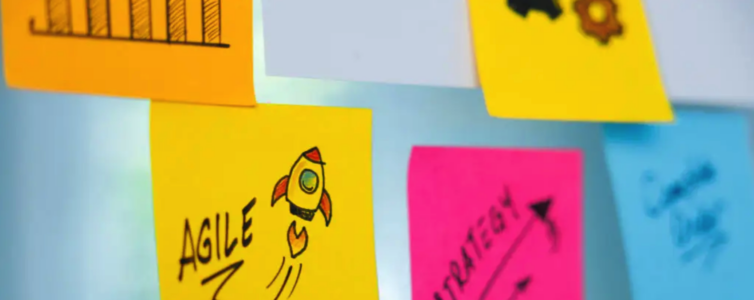The Feature-Based Roadmap: Prioritizing What Matters Most

A feature-based roadmap is a framework that organizes plans around specific features or functionalities. This approach is particularly popular in product development, where teams aim to deliver value to users through impactful, well-prioritized features.
In this article, we’ll explore the ins and outs of feature-based roadmaps, their benefits, and how to create one that aligns with your strategic goals.
What Is a Feature-Based Roadmap?
A feature-based roadmap focuses on delivering specific features or updates to a product or project. Each feature represents a tangible outcome for users, stakeholders, or team members, making this approach highly user-centric.
Unlike roadmaps centered on goals or themes, this framework prioritizes what will be delivered rather than why or how, making it ideal for teams that thrive on delivering clear, incremental improvements.
Benefits of a Feature-Based Roadmap
- User-Centric Focus: Ensures that development efforts prioritize features with the greatest user impact.
- Clarity for Stakeholders: Communicates exactly what will be delivered and when.
- Tangible Deliverables: Breaks down complex projects into manageable and actionable components.
- Supports Agile Practices: Easily aligns with sprints, epics, and backlogs in Agile environments.
Key Elements of a Feature-Based Roadmap
- Feature List: A prioritized list of features or updates to be delivered.
- Timelines or Milestones: Estimated delivery dates for each feature (optional in Agile environments).
- Prioritization: Clear ranking of features based on impact, feasibility, or business goals.
- Stakeholder Alignment: Clear communication about why each feature matters and its value.
How to Create a Feature-Based Roadmap
1. Gather Inputs from Stakeholders
Collaborate with stakeholders, including customers, product managers, and developers, to identify feature ideas and needs.
Example Questions to Ask:
- What do users request most often?
- What features will drive the most business value?
- Are there technical requirements or updates needed?
2. Prioritize Features
Use a framework like RICE (Reach, Impact, Confidence, Effort) or MoSCoW (Must-Have, Should-Have, Could-Have, Won’t-Have) to rank features by importance.
Example Prioritization with RICE:
- Feature A: High Reach, Medium Impact, High Confidence, Low Effort → High priority.
- Feature B: Low Reach, High Impact, Low Confidence, High Effort → Lower priority.
3. Define Delivery Milestones
If your team operates on strict timelines, assign delivery dates to features based on their complexity and priority. In Agile teams, focus instead on sprint planning or release cycles.
Example Milestone Plan:
- Q1: Launch feature A and feature B.
- Q2: Release feature C with supporting updates.
4. Align Features with Goals
Ensure that every feature contributes to broader organizational or product goals. This step prevents feature creep and ensures that resources are focused on high-impact areas.
Example Alignment:
- Goal: Increase user retention → Feature: Introduce personalized onboarding flows.
- Goal: Improve operational efficiency → Feature: Add bulk-editing functionality.
5. Visualize the Roadmap
Present your roadmap in a clear, visual format that stakeholders can easily understand. Use tools like Gantt charts, Kanban boards, or platforms like Herdr.io to display features, timelines, and dependencies.
Best Practices for a Feature-Based Roadmap
- Keep It Simple: Focus on a manageable number of features at a time to prevent team burnout.
- Incorporate Feedback: Continuously gather input from users and stakeholders to refine your feature list.
- Adapt as Needed: Reassess priorities regularly to account for new data or shifting goals.
- Focus on Outcomes: Link features to user and business outcomes to maintain strategic alignment.
Example Feature-Based Roadmap for a SaaS Product
| Feature | Timeline | Priority | Goal Alignment |
|---|---|---|---|
| Personalized onboarding flows | Q1 2025 | High | Increase user retention |
| Bulk-editing functionality | Q1 2025 | Medium | Improve operational efficiency |
| Advanced analytics dashboard | Q2 2025 | High | Enhance decision-making for users |
| Mobile app optimization | Q3 2025 | Medium | Expand user base |
When to Use a Feature-Based Roadmap
This roadmap is ideal for:
- Product Teams: Delivering incremental updates to a digital product or service.
- Agile Development Environments: Organizing work around epics and features.
- Stakeholder Communication: Clearly outlining what users or customers can expect.
- Customer-Focused Organizations: Prioritizing features based on direct user feedback.
Conclusion
The feature-based roadmap is an effective framework for teams focused on delivering high-impact features in a clear and organized manner. By prioritizing features, aligning them with strategic goals, and visualizing the plan, you can streamline development and improve stakeholder satisfaction.
Ready to create your own feature-based roadmap? Try Herdr.io to organize and manage features with ease, ensuring that your product delivers maximum value to users.






